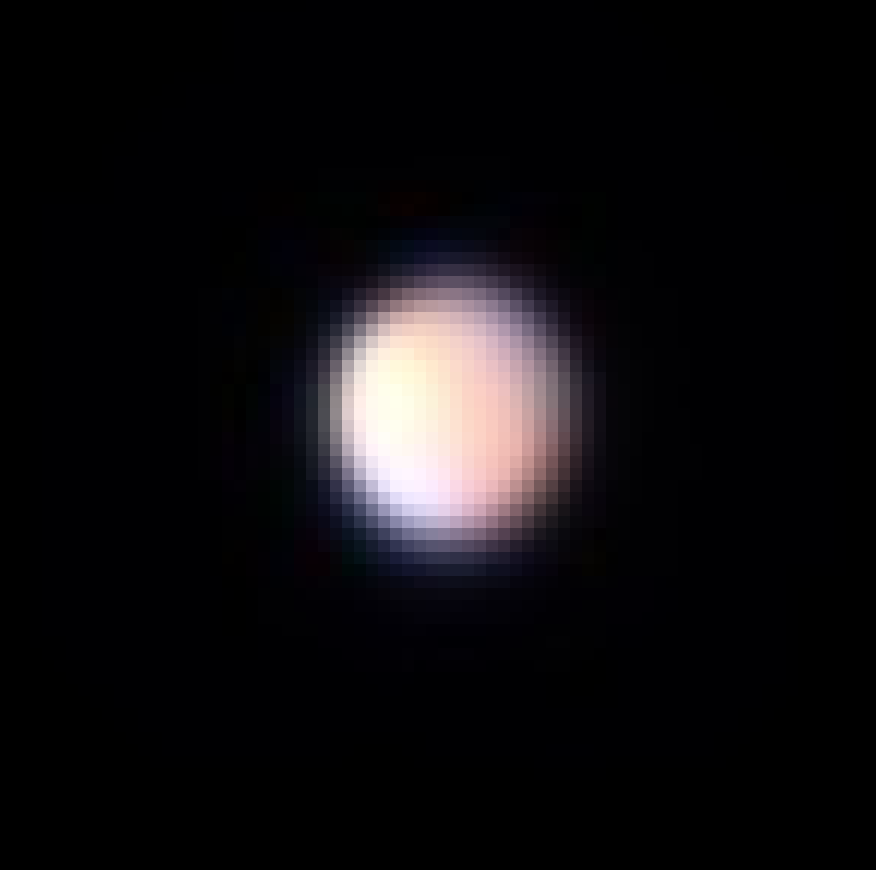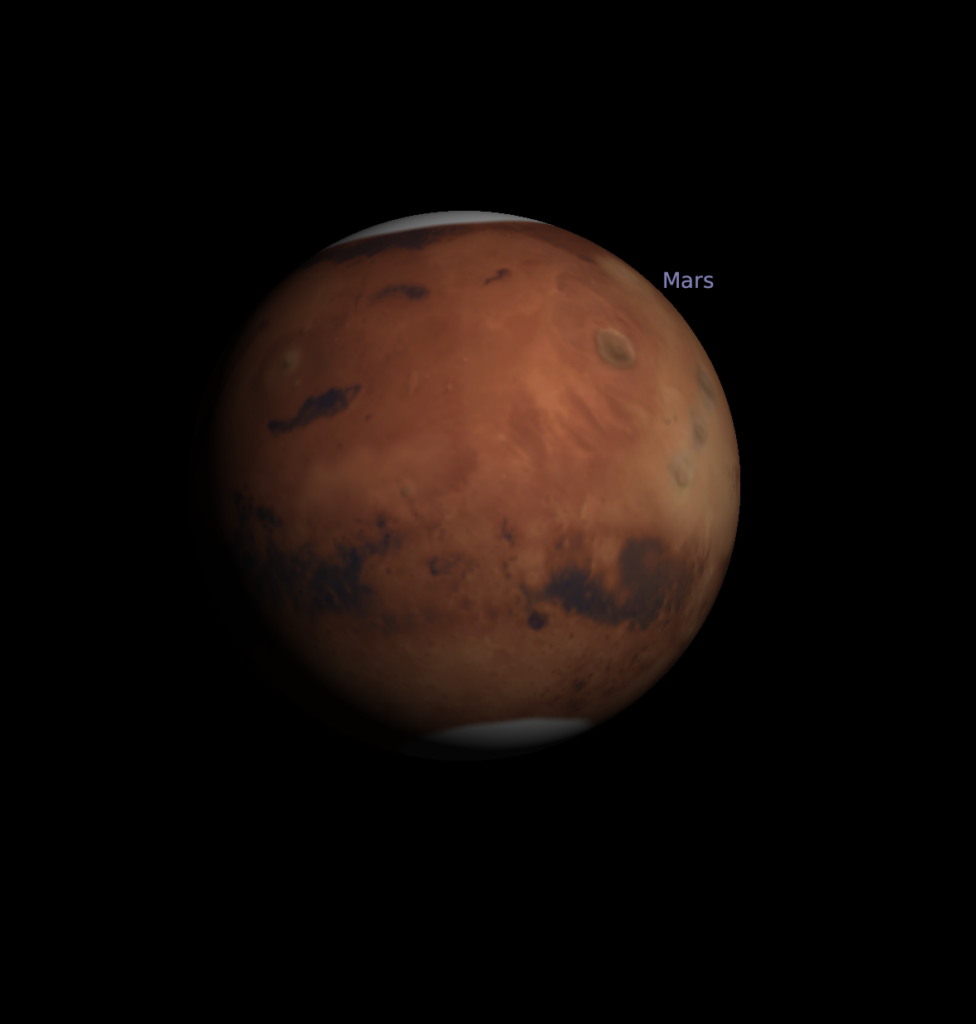A Tour of our Solar System
Adrienne's Astrophotography
2/16/2023
Jupiter
I used the PROMPT-5 telescope to take this observation and took 10 exposures in each filter. In the U filter our exposure duration was 1.5 seconds, in the H⍺ filter our exposure duration was 1 second, and in the OIII filter our exposure duration was 1 second. In order to process our Jupiter photos I first aligned our images. I did this by clicking each individual Jupiter in the 30 photos we had, and then stacked them on top of each other and labeled each filter with its corresponding color to finalize the photos of Jupiter into one, final colored photo of Jupiter. In addition to wanting to see the planet, we also wanted to see the different moons of Jupiter. In order to do this, we played around with the saturation level so that we could bring out the color and brightness of the moons. Speaking of the color of the moons, as you can see in the main image of Jupiter, there are stripes of different colors across the planet. The different stripes of brown and white are from ammonia-ice clouds, ammonium-hydrosulfide-ice clouds, and water-ice clouds. At the temperatures present on Jupiter, the ammonia ice has this caramel color. The water ice is white, as seen in the white stripes. It is because of Jupiter’s strong gravity that we can see the different layers of colors. In addition to the planet’s colors, the moons also have different colors. For example, Io is volcanic and is yellower than Europa which is covered in ice and, in addition to this, Ganymede is also covered in ice.
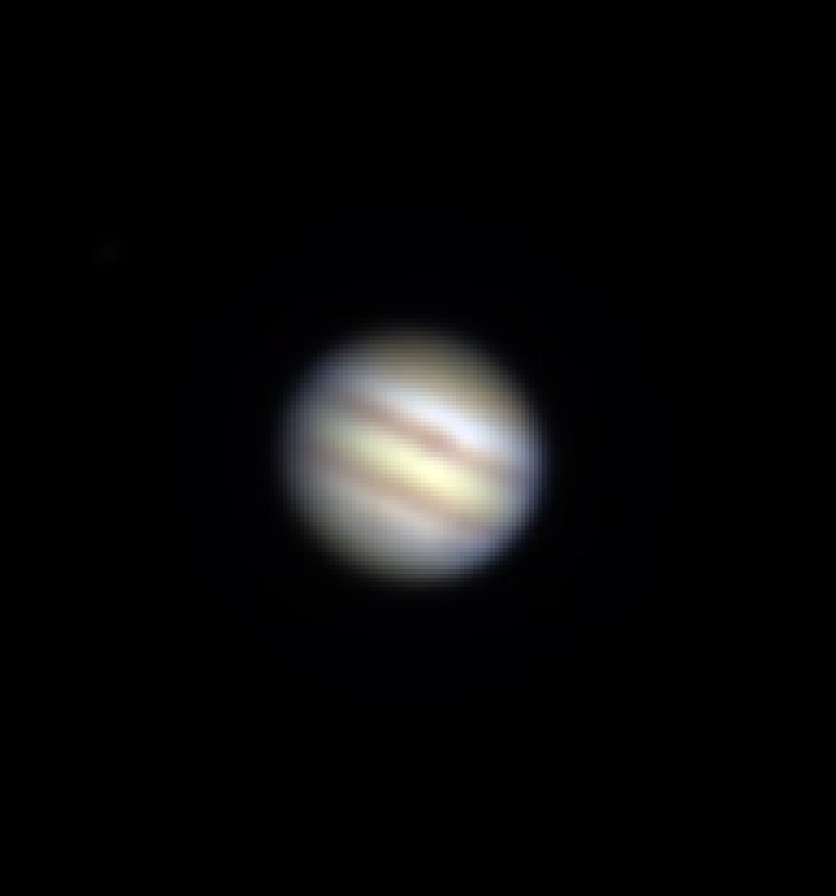
https://tarheels.live/abrumastro/
(also linked in my bio!)
Instagram: adrienne.astrophotography
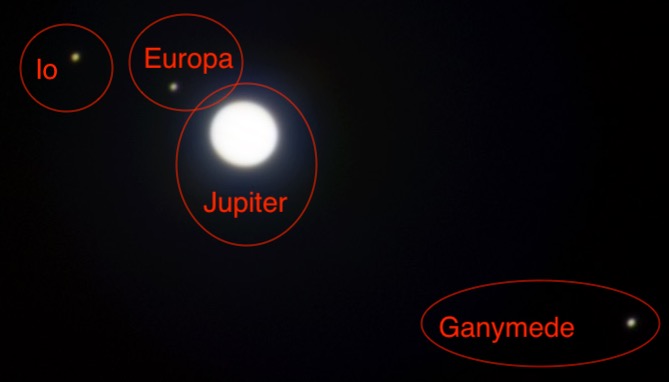
Uranus
This observation was made by my group member, Carlee Markle using the PROMPT-5 telescope. We took 30 exposures in each filter for Uranus. In the B filter, our exposure duration was 2.5 seconds, in the V filter, our exposure duration was 1 second, and in the R filter, our exposure duration was 1 second. In order to process our Uranus photos I first aligned our images. I did this by clicking each individual Uranus in the 90 photos we had, and then stacked them on top of each other and labeled each filter with its corresponding color to finalize the photos of Uranus into one, photo of Uranus, which was then photometrically calibrated to achieve this green/blue hue. In addition to wanting to see the planet, we also wanted to see the different moons of Uranus. In order to do this, we played around with the saturation level so that we could bring out the color and brightness of the moons. Uranus is far enough from the Sun to have clouds of methane ice, which reflect blue light, however, there is a thicker layer of haze around the planet, making it appear less blue than Neptune.
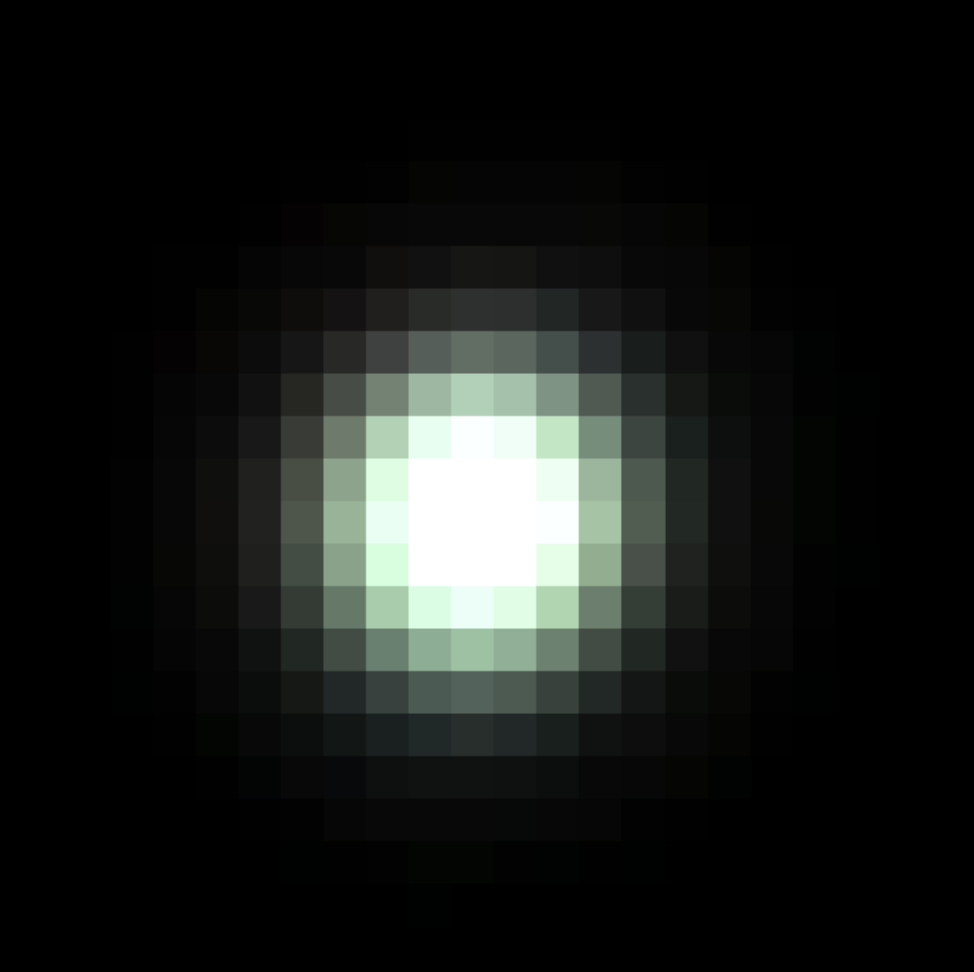
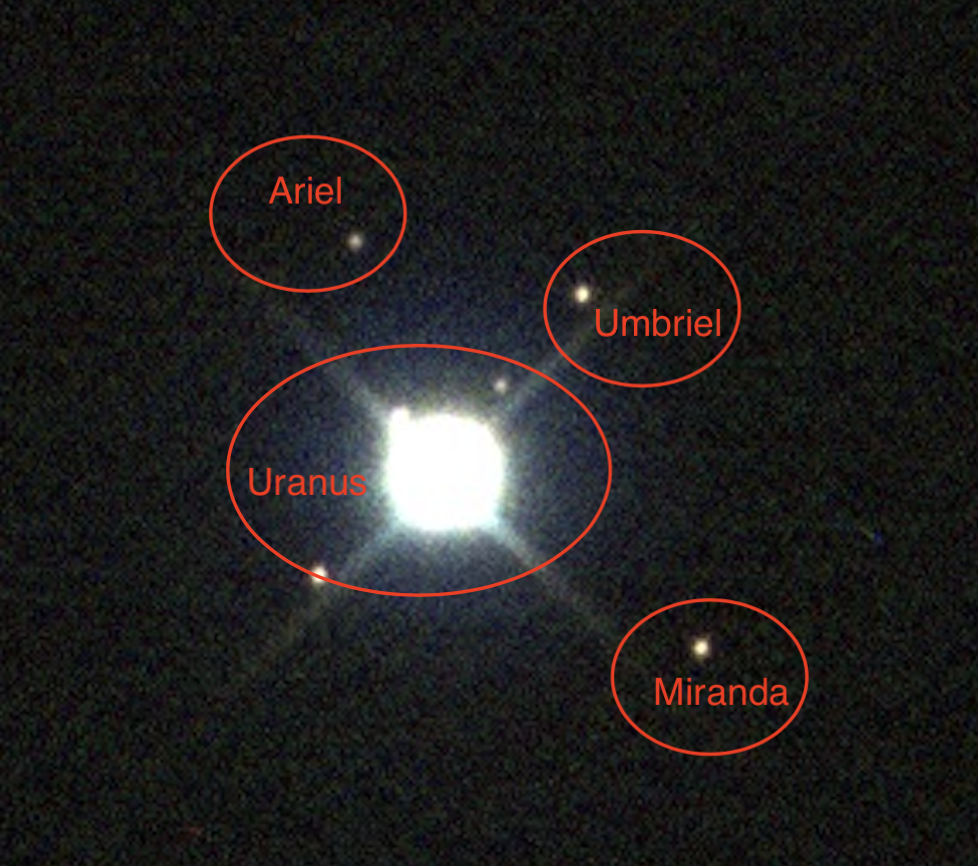
Neptune
This observation was made by Dr. Reichart because we were unable to get Neptune in time for this post and he used the PROMPT-USASK telescope. We took 10 exposures in each filter for Neptune. In the B filter, our exposure duration was 15 seconds, in the V filter our exposure duration was 7.5 seconds, and in the R filter, our exposure duration was 7.5 seconds. In order to process our Neptune photos I first aligned our images. I did this by clicking each individual Neptune in the 30 photos we had, and then stacked them on top of each other and labeled each filter with its corresponding color to finalize the photos of Neptune into one, final photo of Neptune, which was then photometrically calibrated to bring out the blue hue seen below. In addition to wanting to see the planet, we also wanted to see Triton, Neptune’s moon. In order to do this, we played around with the saturation level so that we could bring out the color and brightness of the Triton. Because Neptune is cool enough and far enough away from the sun, it has clouds of methane ice, which absorbs red light while reflecting blue light, hence the blue hue. As you can see in the photo with Triton, it is much browner than the blue planet.
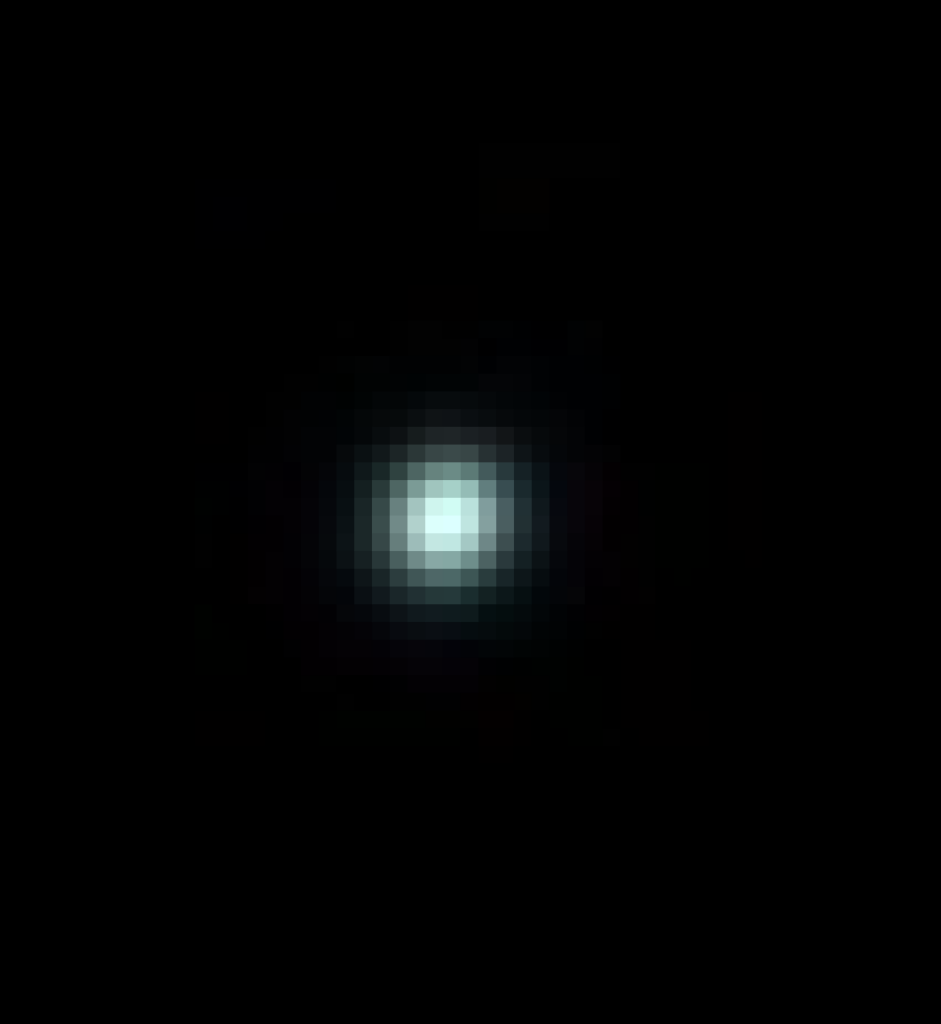
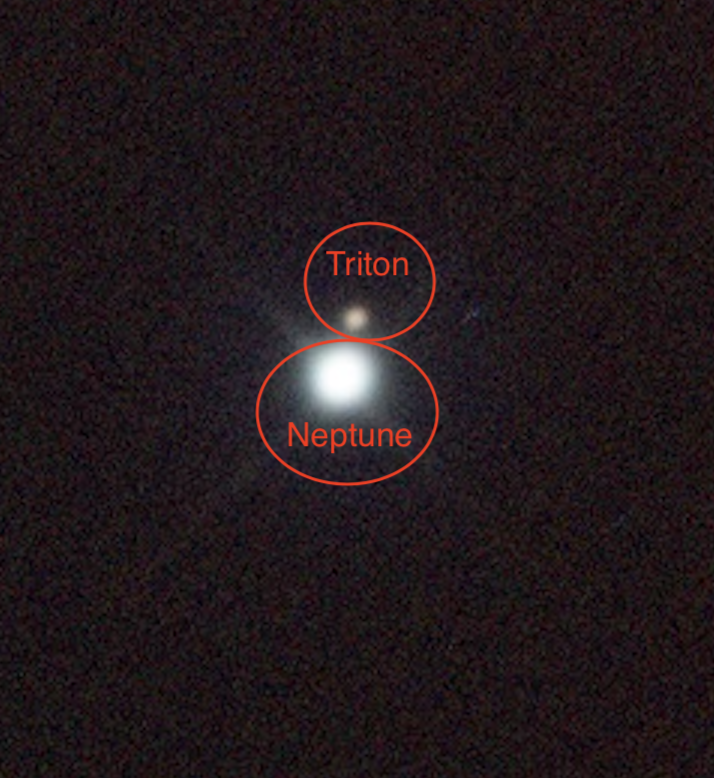
Mars
This observation was made by my group member, Christina Hollyday using the PROMPT-5 telescope. We took 10 exposures in each filter for Mars. In the U filter, we had a 1.2-second exposure duration, in the H⍺ filter, we had a 0.3-second exposure duration, and in the OIII filter, we had a 0.6-second exposure duration. In order to process our Mars photos I first aligned our images. I did this by clicking each individual Mars in the 30 photos we had, and then stacked them on top of each other and labeled each filter with its corresponding color to finalize the photos of Mars into one, final colored photo of Mars. Unfortunately, in our photo of Mars, there is not much detail to make out, however, the different colors of red and brown on Mars are caused by iron oxides in the soil and the white polar caps on Mars are caused by carbon-dioxide ice and some water ice. The more detailed photo of Mars is from Stellarium and the same date and time as our photo of Mars was taken!
